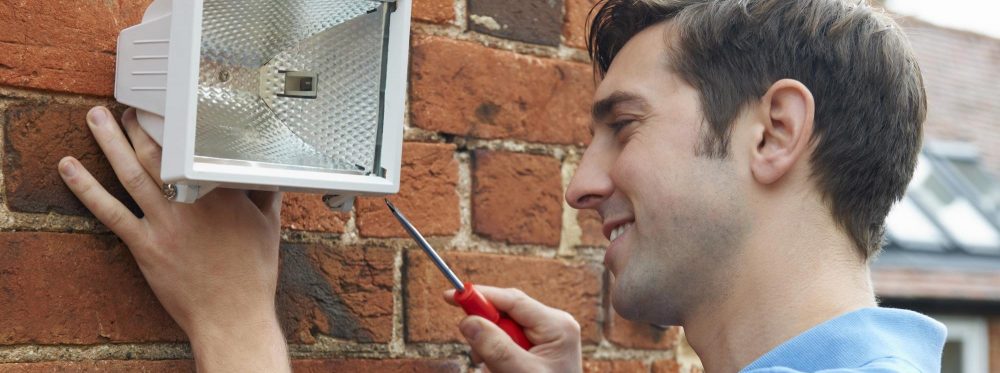There’s nothing quite as welcoming and reassuring as being greeted by a well lit garage, driveway or front porch when you come home at night. Installing motion sensor lights around your home provides a safe entrance for your family and discourages trespassers.
Motion sensor lights work to enhance the security of your home by illuminating stairs, walkways and dark corners of your yard when the sensor detects motion in it’s field of view. This gives you a clear view of steps, curbs and other potential obstacles as well as alerting you to any unwanted trespassers.
How Motion Sensor Lights Work
Most modern motion sensor light fixtures work by detecting infrared waves – the heat that is given off by people, animals and machines like running automobiles. Once activated, the light stays on for as little as one to as much as 20 minutes depending on how the timer settings are adjusted. To prevent the motion detector from activating lights during the day, most units include a light-detecting photocell that senses sunlight.
Typical motion sensor lights feature a wide field of view, up to an arc of 240 degrees. These sensors can be adjusted for short or long range, from a few feet up to 60 feet from the unit. If you find the sensor is activated by wind or cars passing by your home, try turning down the range to cover a smaller area and aiming the sensor at a lower angle.
Most installations of motion sensor lights use the existing wiring attached to a wall switch. Keep the switch in the “on” position to allow the sensor to control the light automatically. Of course, there will be times when you want the unit to function as a normal light that can be turned on and off manually. To keep the light on beyond the limit set on the timer, quickly flip the switch off and on again. Repeat this pattern to return the fixture to motion sensing mode.
Where to Install Motion Sensing Lights
To provide the best coverage, motion sensor lights should be installed so each sensor’s range covers as much of your driveway or walkway as possible. To deter intruders, be sure to cover dark and hidden areas around your yard with additional units. Other areas that can benefit from motion sensor lights include stairwells, patios, docks and pathways. Any area that is difficult to navigate at night becomes safer with the addition of automatic illumination.
For best results, motion sensor lights should be installed between six and 10 ft. high and aimed to detect people walking past rather than toward the sensor. In areas where this is not feasible, consider purchasing a unit with remote sensors that can be mounted separately.
Replacing Older Fixtures with New Motion Sensor Lights
Installing motion sensor lights to replace an existing fixture is relatively easy job. However, many older homes have outdated electrical boxes and/or wiring that does not meet modern code requirements. The safest course of action is to hire an experienced electrician to inspect the system and make any needed upgrades.
If you need to add motion sensor lights to a new location, it will be necessary to install new wiring and switches to do so. These new lines are required to be encased in the proper conduit and electrical boxes designed for outdoor locations. This is not a job for the do-it-yourselfer, and should only be tackled by a licensed electrician.
Call Henderson Electric of NWF for Motion Sensor Lights
To add the to security of motion sensor lights to your home, call Henderson Electric of NWF. Our team of experienced and licensed electricians will help you choose the best options to keep you and your loved ones safe.

